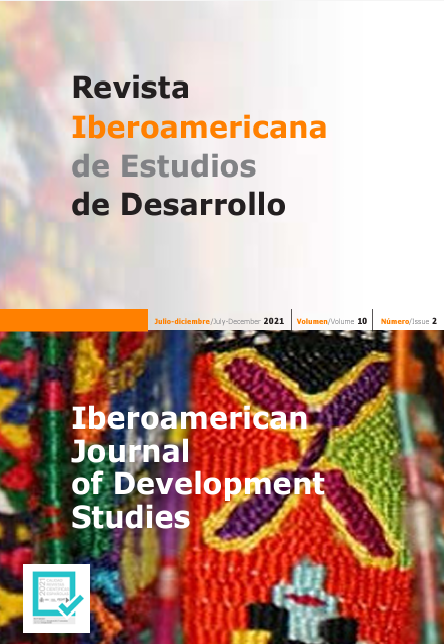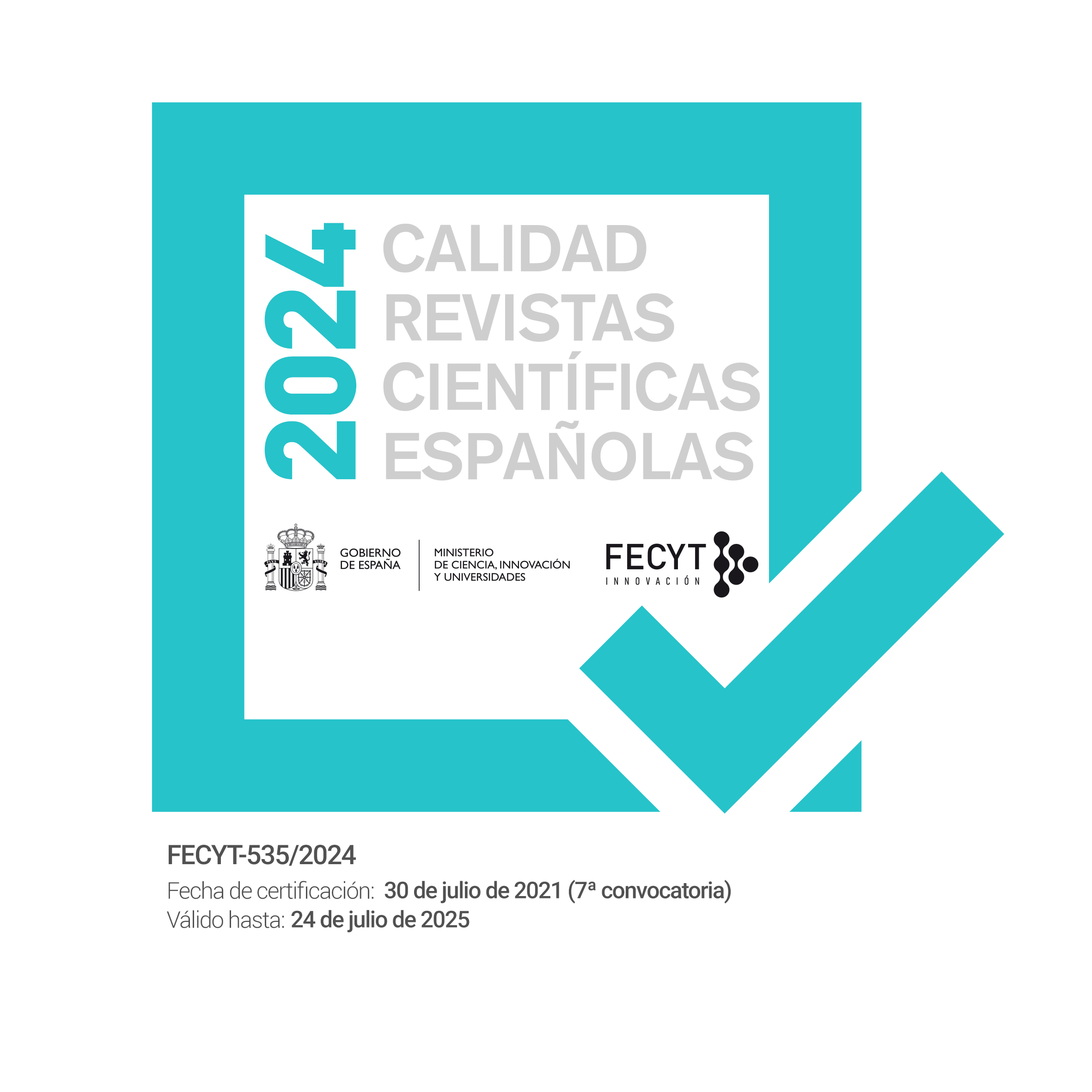International development cooperation and the protection of the human rights of LGBTI persons: perspectives from the 2030 Agenda
DOI:
https://doi.org/10.26754/ojs_ried/ijds.557Keywords:
international cooperation, development, SDGs, human rights, LGBTI, diversityAbstract
The Sustainable Development Goals provide new grounds for a stronger interlinkage between international cooperation and development agendas and the protection and promotion of the human rights of LGBTI persons. The 2030 Agenda’s commitment to leave no-one behind provides a clear mandate for all countries and public actors, including development agencies, to put equality, inclusion and non-discrimination at the center of international cooperation policies, in the framework of a human rights-based approach. With this paper, it is intended to analyze the most meaningful intersections between sustainable development goals and targets and the rights of LGBTI persons from a general perspective and suggest possible ways forward. In the study, it is also considered the characteristics of the Spanish cooperation’s approach in this regard, from a historical point of view, and present the latest developments.
Downloads
References
ARMAS H (2009). Exploring Linkages Between Sexuality and Rights to Tackle Poverty. IDS Bulletin 37:21-26.
BADGETT MVL (2006). Discrimination Based on Sexual Orientation: A Review of the Economics Literature and Beyond. In: Rodgers WM (ed.). Handbook on the Economics of Discrimination. Edward Elgar, Cheltenham, pp 161-186.
BADGETT MVL (2014). The Economic Cost of Stigma and the Exclusion of LGBT People: A Case study of India. World Bank Group, Washington DC.
BADGETT MVL, CREHAN P (2016). Investing in a Research Revolution for LGBTI Inclusion. World Bank-UNDP, Washington.
BADGETT MVL, CREHAN P (2017). Developing actionable research priorities for LGBTI inclusion. Journal of Research in Gender Studies 7(1): 218-247.
BADGETT MVL, FRANK J (2007). Sexual Orientation Discrimination: An International Perspective. Routledge, Nueva York.
BADGETT MVL, SELL R (2018). A Set of Proposed Indicators for the LGBTI Inclusion Index. UNDP, Nueva York.
BADGETT MVL, DURSO L, SCHNEEBAUM A (2013). New Patterns of Poverty in the Lesbian, Gay, and Bisexual Community. Williams Institute, Los Ángeles.
BADGETT MVL, WAALDIJK K, RODGERS Y (2019). The Relationship between LGBT Inclusion and Economic Development: Macro-Level Evidence. World Development 120:1-14.
BADGETT MVL, DURSO L, KASTANIS A, MALLORY C (2013). The business impact of LGBT-supportive policies. The Williams Institute, Los Ángeles (California).
BADGETT MVL, NEZHAD S, WAALDIJK K, RODGERS Y (2014). The Relationship Between LGBT Inclusion and Economic Development: An Analysis of Emerging Economies. Usaid-The Williams Institute, Washington DC y Los Ángeles.
BADIEE S, KLEIN T, APPEL D, MOHAMEDOU EI, SWANSON E (2017). Rethinking donor support for statistical capacity building. In: OECD. Development Cooperation Report 2017: Data for Development. OECD Publishing, París.
BECKER G (1971). The Economics of Discrimination. University of Chicago Press, Chicago.
BERGENFIELD R, MILLER AM (2013). Queering international development? An examination of new «LGBT rights» rhetoric, policy, and programming among international development agencies. LGBTQ Policy Journal IV:7-21.
BERGGREN N, ELINDER M (2012). Is tolerance good or bad for growth? Public Choice 150(1-2):283-308.
BIALER PA, MCINTOSH CA (2016). Discrimination, stigma, and hate: The impact on the mental health and well-being of LGBT people. Journal of Gay & Lesbian Mental Health 20(4):297-298.
BLOSNICH JR, HENDERSON ER, COULTER RWS, GOLDBACH JT, MEYER IH (2020). Sexual Orientation Change Efforts, Adverse Childhood Experiences, and Suicide Ideation and Attempt Among Sexual Minority Adults, United States, 2016-2018. American Journal of Public Health 110(7):1024-1030.
BRYSK A, MEHTA A (2014). Do rights at home boost rights abroad? Sexual equality and humanitarian foreign policy. Journal of Peace Research 51(1):97-110.
CARROLL A (2015). Measuring LGBTI Inclusion in the World: Summary, Survey Report on the proposed UNDP/OHCHR Global LGBTI Inclusion Index. ILGA, Ginebra.
CIDH (2018). Cuadernillo de Jurisprudencia de la Corte Interamericana de Derechos Humanos n.° 19: Derechos de las personas LGTBI. Corte Interamericana de Derechos Humanos, San José de Costa Rica.
CONAPRED (2016). Glosario de la diversidad sexual, de género y características sexuales. Consejo Nacional para Prevenir la Discriminación, Ciudad de México.
CREA (2012). Count Me In! Research Report Violence against Disabled, Lesbian, and Sex-Working Women in Bangladesh, India, and Nepal. CREA, Nueva Delhi.
DAY J.K, IOVERNO S, RUSSELL ST (2019). Safe and supportive schools for LGBT youth: addressing educational inequities through inclusive policies and practices. Journal of School Psychology 74:29-43.
DIVAN V, CORTEZ C, SMELYANSKAYA M, KEATLEY J (2016). Transgender social inclusion and equality: a pivotal path to development. Journal of the International AIDS Society 19(3Suppl 2).
DUGAROVA E (2015). Social Inclusion, Poverty Eradication and the 2030 Agenda for Sustainable Development. United Nations Research Institute for Social Development, Ginebra.
EUROPEAN UNION (2013). Guide to Statistics in European Commission Development Co-operation. EU Publications, Luxemburgo.
FLENTJE A, HECK NC, COCHRAN BN (2013). Sexual Reorientation Therapy Interventions: Perspectives of Ex-Ex-Gay Individuals. Journal of Gay & Lesbian Mental Health 17(3):256-277.
FORSTEIN M. (2004). The pseudoscience of sexual orientation change therapy. BMJ 328 (7445).
GUIXÉ I (coord.) (2015). Derechos humanos y desarrollo: el enfoque basado en derechos humanos en la cooperación al desarrollo. Institut de Drets Humans de Catalunya, Barcelona.
HATZENBUEHLER ML, BIRKETT M, VAN WAGENEN A, MEYER IH (2014). Protective school climates and reduced risk for suicide ideation in sexual minority youths. American Journal of Public Health 104:279-286.
HAWKINS K, WOOD S, CHARLES T, HE X, LI Z, LIM A, MOUNTIAN I, SHARMA J (2014). Sexuality and Poverty Synthesis Report. IDS Evidence Report 53. Institute of Development Studies, Brighton.
HOPE KR (2020). Peace, justice and inclusive institutions: overcoming challenges to the implementation of Sustainable Development Goal 16. Global Change, Peace & Security 32(1):57-77.
IFEG (2020). Statement on conversion therapy. Journal of Forensic and Legal Medicine 72.
INSTITUTO NAVARRO PARA LA IGUALDAD (2020). Guía básica sobre diversidad sexual y de género. Gobierno de Navarra, Pamplona.
IRCT (2020). It’s Torture, Not Therapy. A Global Overview of Conversion Therapy: Practices, Perpetrators, and the Role of States. International Rehabilitation Council for Torture Victims, Copenhague.
KAMA A, RAM Y, HALL CM, MIZRACHI I (2019). The benefits of an LGBT-inclusive tourist destination. Journal of Destination Marketing and Management 14.
KHAN S, BONDYOPADHYAY A, MULJI K (2005). From the Front Line: The Impact of Social, Legal and Judicial Impediments to Sexual Health Promotion and HIV and AIDS-Related Care and Support for Males who Have Sex with Males in Bangladesh and India, a Study Report. Naz Foundation International, Londres.
KLAWITTER M (2015). Meta-analysis of the Effects of Sexual Orientation on Earnings. Industrial Relations 54(1):4-32.
KUMAR S, KUMAR N, VIVEKADHISH S (2016). Millennium Development Goals (MDGs) to Sustainable Development Goals (SDGs): Addressing Unfinished Agenda and Strengthening Sustainable Development and Partnership. Indian Journal of Community Medicine 41(1):1-4.
LAMONTAGNE E, D’ELBÉE M, ROSS M.W, CARROLL A, PLESSIS AD, LOURES L (2018). A socioecological measurement of homophobia for all countries and its public health impact. European Journal of Public Health 28(5):967-972.
MACNAUGHTON G (2017). Vertical inequalities: are the SDGs and human rights up to the challenges? International Journal of Human Rights 21(8):1050-1072.
MAYER KH (2011). Sexually Transmitted Diseases in Men Who Have Sex with Men. Clinical Infectious Diseases 53(suppl_3): S79-S83.
MENDOS LR (2019). State-Sponsored Homophobia 2019: Global Legislation Overview Update. ILGA, Ginebra.
MENDOS LR (2020). Poniéndole límites al engaño: un estudio jurídico mundial sobre la regulación legal de las mal llamadas «terapias de conversión». ILGA, Ginebra.
MEYER LH, NORTHRIDGE ME (eds.) (2007). The Health of Sexual Minorities. Public Health Perspectives on Lesbian, Gay, Bisexual and Transgender Populations. Springer, Nueva York.
MORONDO TARAMUNDI D, BLANCO LO COCO MD (2018). Estudio sobre la situación de las personas LGTBI del norte de Centroamérica con necesidades de protección internacional en Guatemala y México. Aecid, Madrid.
MSSSI (2018). Glosario de términos de diversidad afectiva sexual. Ministerio de Sanidad, Servicios Sociales e Igualdad, Madrid.
MUJIKA I, VILLAR A (2009). La diversidad sexual y los derechos humanos. Aldarte, Bilbao.
MÜLLER A (2015). Strategies to include sexual orientation and gender identity in health professions education. African Journal of Health Professions Education 7(1):4-7.
NACIONES UNIDAS (2018). La Agenda 2030 y los Objetivos de Desarrollo Sostenible: una oportunidad para América Latina y el Caribe. Cepal, Santiago de Chile.
NYECK SN, SHEPHERD D, SEHOOLE J, NGCOBOZI L, CONRON KJ (2019). The Economic Cost of LGBT Stigma and Discrimination in South Africa. UCLA, Los Ángeles.
OHCHR (2016). Living Free & Equal. What States Are Doing to Tackle Violence and Discrimination Against Lesbian, Gay, Bisexual, Transgender and Intersex People. Office of the High Commissioner for Human Rights, Nueva York/Ginebra.
OHCHR (2019) Born Free and Equal. Sexual Orientation, Gender Identity and Sex Characteristics in International Human Rights Law. Office of the High Commissioner for Human Rights, Nueva York/Ginebra.
OUTRIGHT ACTION INTERNATIONAL (2016). Towards an LGBTI Inclusion Index: Report of the civil society consultations organized by OutRight Action International and ILGA, in partnership with UNDP. Nueva York.
RUDOLPH A (2017). The concept of SDG-sensitive development cooperation. Implications for OECD-DAC members. Deutsches Institut für Entwicklungspolitik, Bonn.
SÁNCHEZ MORENO M (2011). Del enfoque de derechos a la diversidad en la cooperación al desarrollo. Qué cooperación internacional queremos y de qué manera. Pueblos 46.
SNAPP SD, BURDGE H, LICONA AC, MOODY RL, RUSSELL S (2015). Students’ Perspectives on LGBTQ-Inclusive Curriculum. Equity & Excellence in Education 48(2):249-265.
TEIXEIRA-FILHO FS, RONDINI CA, BESSA JC (2011). Reflexões sobre homofobia e educação em escolas do interior paulista. Educação e Pesquisa 37:725-741.
THORESON R (2011). Capably Queer: Exploring the Intersections of Queerness and Poverty in the Urban Philippines. Journal of Human Development and Capabilities 12:493-510.
UNESCO (2012). Education sector responses to homophobic bullying. Unesco, París.
UNFPA (2010). Comprehensive Sexuality Education: Advancing Human Rights, Gender Equality and Improved Sexual and Reproductive Health. UNFPA, Bogotá.
WINKLER IT, SATTERTHWAITE ML (2017). Leaving no one behind? Persistent inequalities in the SDGs. International Journal of Human Rights 21(8):1073-1097.
WINTER S, SETLLE E, WYLIE K, REISNER S, CABRAL M, KNUDSON G, BARAL S (2016). Synergies in health and human rights: a call to action to improve transgender health. The Lancet 388 (10042):318-321.
WOOD J, SIMON S, ANMEGHICHEAN M (2007). LGBT Health and Rights in East Africa: A Snapshot of Successes and Challenges for the Advocacy Community. Open Society Institute, Nueva York.
WHO (WORLD HEALTH ORGANIZATION) (2015). Sexual Health, Human Rights and Law. WHO, Ginebra.
WHO (WORLD HEALTH ORGANIZATION) (2016). FAQ on Health and Sexual Diversity - An Introduction to Key Concepts. WHO, Ginebra.
WORLD BANK (2013). Inclusion Matters: The Foundation for Shared Prosperity. World Bank, Washington DC.
WTO (WORLD TOURISM ORGANIZATION) (2017). Second Global Report on LGBT Tourism. UNWTO, Madrid.
Downloads
Published
How to Cite
Issue
Section
License
Copyright (c) 2023 Sergio Colina-Martín

This work is licensed under a Creative Commons Attribution-NonCommercial-NoDerivatives 4.0 International License.








